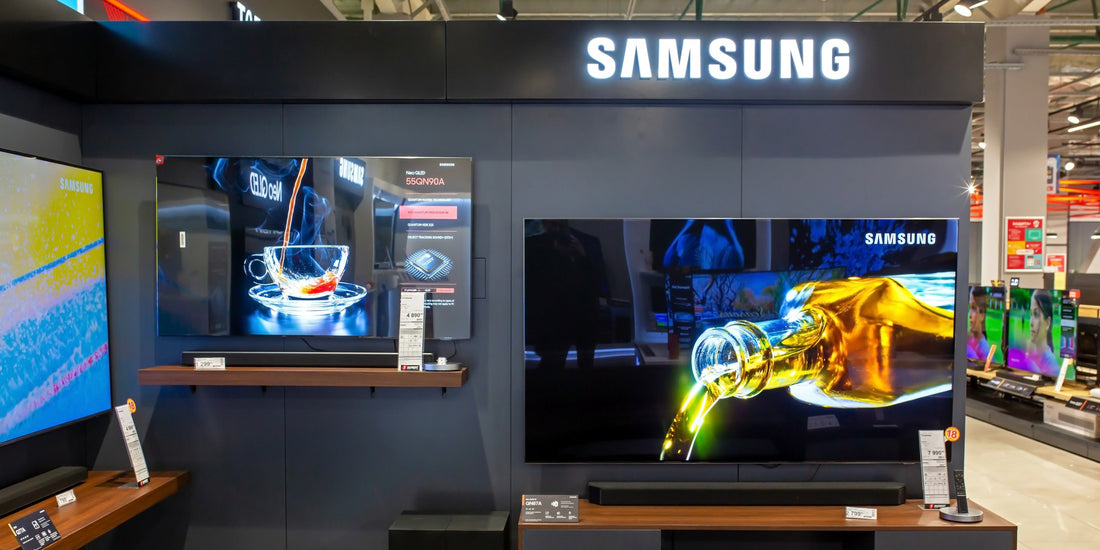Cheap vs Expensive OLED TV - Is There Any Difference
TV display technology has drastically changed over time, from massive CRT TVs to plasma TVs that emit heat, and we have indeed come a long way. Once considered a luxury, full HD TVs now seem inferior in comparison to the launch of 4K and 8K TVs. OLED and QLED are two new TV technologies that have become extremely popular because of their superior image quality.
The sheer amount of features and options available to those who are thinking about purchasing a TV might be overwhelming. Every technology is unique and has advantages and disadvantages. Selecting the appropriate TV technology becomes more complicated when the difference in price between high-end and mid-range models shrinks.
We have streamlined this article on some of the differences between cheap and expensive OLED TVs, which will help you choose the ideal one for yourself. So, keep reading!
OLED TV: An Overview
You have certainly been drawn in by the world of OLED displays if you have been contemplating upgrading your TV. The best TVs typically use OLED (organic light-emitting diode) technology, which frequently produces the best picture quality available because of its vibrant color, deep black levels, wide viewing angles, and fantastic contrast.
There are many excellent OLED televisions on the market at present and the transparent OLED TV is one of them. Such a device has a transparent screen and it can not only be used as a television but also a transparent monitor.
Why Should You Opt For An OLED TV?
Thinking about why you should select an OLED TV instead of others? In this article, we have mentioned some benefits and limitations of OLED TV for you to help you make your decision.
● Benefits Of An OLED TV
Well, you are most probably familiar with LCD TVs; they use a solid backlight to illuminate a pixel grid. Unfortunately, the drawback of LCD is that the backlight is unable to select which pixels to illuminate. On-screen content is more gray when it is meant to appear black because it is still illuminated.
However, OLED TVs have gotten rid of the backlight, completely solving this issue. Rather, they employ organic LEDs with the ability to self-illuminate and switch off when the content on the screen is meant to be black. This leads to an "infinite contrast ratio," which improves color accuracy and creates inky blacks.
Furthermore, OLED technology has a quick response time. On-screen content appears a little smoother because each pixel can change its color or intensity quickly, especially during gaming.
● Limitations Of An OLED TV
However, a few restrictions limit the advantages of OLED. Burn-in is a very typical issue on OLED displays because non-moving on-screen material (such as a channel logo or a HUD from a video game) can gradually deteriorate the organic LEDs.
In addition, OLED screens are incredibly dim compared to their LCD cousins. Moreover, OLED TVs with all the modern bells and whistles (for example, a 4K resolution or 120Hz refresh rate) usually cost a lot of money because of the high cost of OLED manufacturing. It is also not helpful that certain LCD TVs include "local dimming zones," which imitate OLED contrast ratios at a significantly reduced cost.
When you are viewing a movie in a dark environment, it is simple to ignore these issues because the OLED looks fantastic. However, in a well-lit room, particularly if you purchase an OLED TV with a dim screen, the higher contrast ratio of the OLED is challenging to notice.
Difference Between Cheap And Expensive OLED TV
You must often wonder whether an inexpensive OLED TV is indeed inferior to a mid-range or high-end tv model. Or does shopping at the discount store cause the OLED's infinite contrast ratio to vanish? Well, we have gathered all the information you need to learn about the difference between a cheap and an expensive OLED TV.
The main differences between inexpensive and costly OLED TVs are picture quality, build quality, and additional functions. More expensive OLED TVs usually have more advanced HDR capabilities, brighter screens, higher-quality image processing, and more sleek designs. They might also provide more extended warranties, higher sound quality, and other smart features.
In order to be more affordable, less expensive OLED TVs may forgo some of these capabilities, such as increased processing power, reduced brightness, and fewer smart functions.
Both, though, ought to provide deep blacks along with the better contrast ratios that come with OLED technology.
Conclusion
In conclusion, even if there are performance differences between inexpensive and costly OLED TVs, the average consumer may not always be able to justify the price difference in these TVs.
Customers on a tight budget can still acquire vital features and excellent picture quality from less expensive models. But, if you are a viewer looking for the best possible picture quality and the newest technologies, it might end up being worthwhile to spend the money on a high-end OLED TV, which will undoubtedly give you the best experience you desire.
In the end, the choice should be based on your priorities, viewing tastes, and financial constraints.

